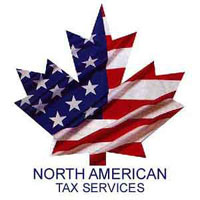

Substantial Presence Test - applicable to non-US citizens or aliens filing form 1040 or 1040NR
If you spend a considerable amount
of time in the United States, this may result in you being considered a resident
of the United States. The US applies what is known as the substantial presence
test to determine whether an alien (a non-US citizen) should be deemed a resident
for US tax purposes. The test applies as follows:
Count the number of days you spent
physically in the US this year, last year and two years ago, and apply this
formula:
· A - number of days in
the current year, plus
· B- number of days in the prior year, divided by 3, plus
· C- number of days in the second prior year, divided by 6.
If the total ( A + B + C) is equal
to or greater than 183, and you are present in the US for more than 31 days
in the current year, then you meet the substantial presence test, and will
be considered a US resident.
Note that a US day may include
being in the US even for a mere few hours. For e.g. even a day-trip to go
shopping, may count as a day.
There are a few circumstances where
you can be physically present (in the US), but the day will not count towards
the substantial presence test. An example of such would be if you were in
transit between two locations outside of the United States. For instance,
if you were to fly from Mexico City to Montreal, Quebec, by way of New York,
the stop in New York would not count as a day.
Closer connection exception
The substantial presence test will
not apply to you if:
· You are physically present
in the United States for under 183 days,
· You have a tax home in another country
· You have a closer connection (as defined under US domestic law) to
that country,
· You have not applied for a green card, and
· You file form 8840 on time (June 15 of the following year, but you
can apply for extensions).
A tax home may consist of your
primary workplace, if you have one. Otherwise it may consist of your personal
residence.
Connections with a country may
involve personal ties, such as your spouse and immediate family, your work,
and your home. Secondary connections may include your social, religious, political
affiliations, etc.
Treaty exception
You can elect to file (Form 1040NR
and/or Form 8833) as a non-resident alien under the treaty, even if you don’t
meet all the requirements for the closer connection exception. All you have
to do is meet one of the treaty requirements. If after considering these requirements
in accordance to the Treaty, you can not establish specific ties to Canada,
but such ties apply to the US, you will be considered a US resident (form
1040 will be required in such case).
The following is a summary of the
above referred to criteria as outlined in Article IV in the Canada-U.S. Tax
Treaty:
a. You have a permanent home available
to you in Canada, but not in the United States. A permanent home need not
be owned by you. It can be rented; it can be provided by your spouse, employer,
or friend. A home that is rented to a third party may still be “available”,
if the tenancy is of short duration, or is to a related person.
b. You have closer connections
to Canada than to the US. These connections are similar to those described
in “closer connection exception”.
c. You have an “habitual
abode” in Canada, and not in the US. An habitual abode is a place that
you regularly sleep. You need not sleep there a majority of the time –
just regularly.
d. You are a citizen of Canada,
and not of the United States.
e. If none of the above tests is conclusive, then it is possible to apply to “competent authority” for a ruling.
North American Tax Services - Attention:
Joseph Soussan
2510 Yonge Street, Suite 322A
Toronto, Ontario, M4P 2H7
Tel: 416-489-4829
Email: jsoussan@usatax.ca

Copyright © 2021 North American Tax Services